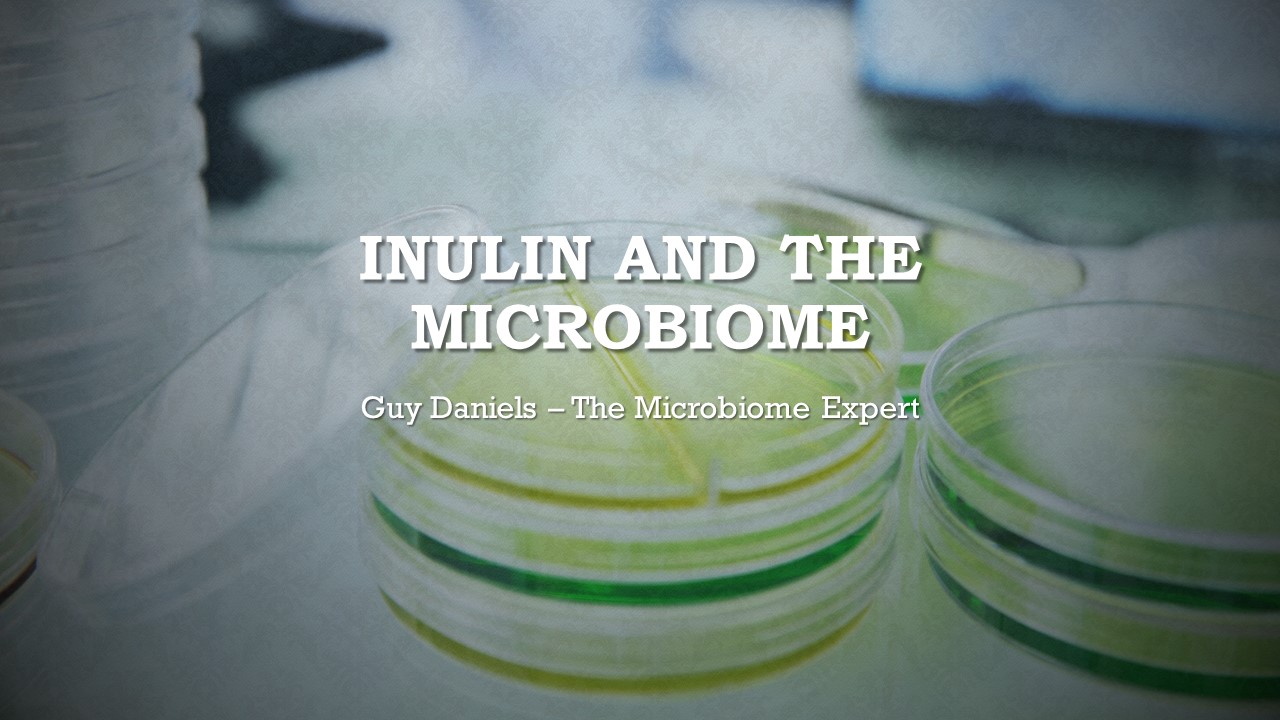The food you eat is usually just thought of as protein, carbohydrates and fats. But the reality is, that it’s much more complicated than that. The fats alone have a variety of different forms and end results. There are phytochemicals (plant compounds) found in whole foods, which can have a myriad of beneficial effects on the body. And of course there’s fiber as well. Or should we say prebiotics?
So what is the difference between fiber and prebiotics? That’s a great question as many experts are confused by this, because they are so similar. Both are indigestible to us, and make their way, more or less intact further on down the GI tract. When most people think of the term fiber, they think of a bulking physical action, which has its benefits. Prebiotics on the other hand conjure up the idea of feeding good bacteria. Both of these are true. But fibers also ferment, and prebiotics can also feed bad bacteria. The key is knowing which are best to feed your specific microbiome, at what dose and blended with which other prebiotics
Inulin is a crucial prebiotic which I’ve used to help many people over the years as the former director of medical education for a microbiome firm. And now with my own educational platform, I’m here to help everybody, and a part of that is informing you on the benefits of inulin.
So, what is inulin and why should you care? It is a normal component of your food, however due to its structure, your gastrointestinal tract is not able to access the sugars within. The good news is that those sugars become fuel for your microbiome. There are several critical health-promotors within your microbiota in which multiple studies have shown that they love inulin and thrive off of it. They are Eubacterium rectale (now Agathobacter rectalis), species from the genera Bifidobacterium and Anaerostipes and the superhero of the gut Faecalibacterium prausnitizii.
These bacteria possess the enzymatic machinery able to access the sugars locked behind specific bonds. But also important is where they do it. I don’t recommend simple prebiotics like FOS and GOS to people. Yes, I know they have been shown to increase Bifidobacterium, but big deal. Many prebiotics increase Bifidobacterium, and the microbiome is infinitely more complex than just one genus. These simple snipped up prebiotics will ferment in the small intestine. This is especially bad for people with SIBO, and yet a keep having consults with SIBO patients who have been recommended these products by their practitioners. The relative complexity of inulin (not as complex as say pectin), allows it to be fermented in the colon. That´s a very good thing.
Now there are those who haven’t had good results with inulin in the past. I’m well aware. You’re either not using it correctly or you shouldn’t be using it at all. The advice of an expert, THE expert, in this field would be of use to you. I never just recommend one prebiotic to people suffering from dysbiosis. I have a unique way of doing things, and it’s backed by science and proven to work. Feel free to view my testimonials.
There are a number of sources of inulin in our diet, such as onions, garlic and asparagus. Now, the low FODMAPs people will tell you to avoid these foods. That’s just dumb. The bacteria I mentioned previously are some of the most health-promoting bacteria within our collective microbiomes. Why take one of their key fuels away only to treat symptoms, and not the root cause. Watch my video entitled, “Low FODMAPs Diet in NOT a Good Long Term Solution.”
In our world as it is, we all now have to be our own health advocates. With a broken government, food and medical system, you need to take charge of your healthcare. So, educate yourself, as best you can. This is why I’ve launched my educational platform. For you. You can find my presentation entitled, “Inulin and the Microbiome” in my Microbiome University tab, and also on my YouTube channel. If you have a condition or disease that you think would be well served by addressing your microbiome, you can visit the Protocols tab on my website where you can find a science-based protocol which may dramatically improve your quality of life.
The references cited within this video presentation (who else is providing you with this?)
Modulation of the human gut microbiota by dietary fibres occurs at the species level – PubMed (nih.gov)
Dietary fructose intolerance, fructan intolerance and FODMAPs – PubMed (nih.gov)
Oligofructose Provides Laxation for Irregularity Associated with Low Fiber Intake – PubMed (nih.gov)

